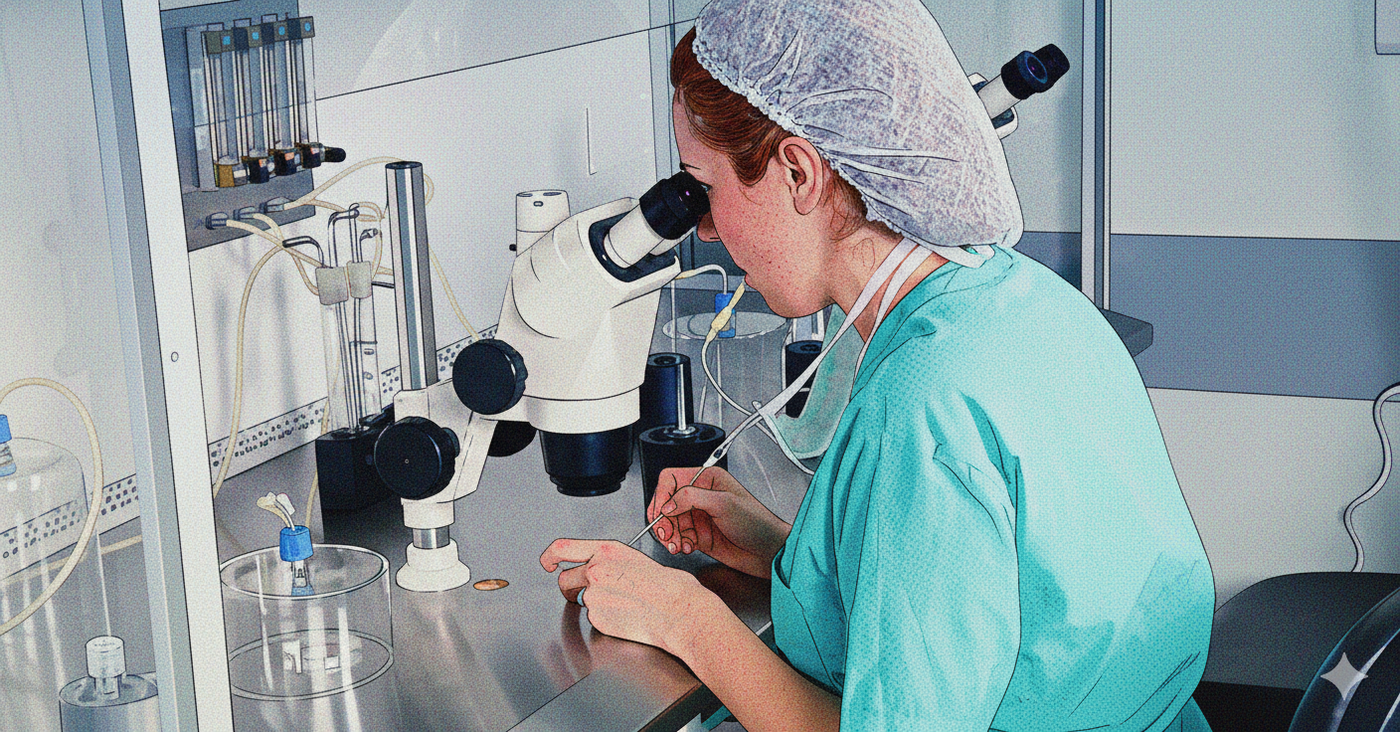Are Your Swimmers In Shape? How To Know If Your Semen Analysis Is Normal

"You want me to do what? Where?"
That's the reaction you'll get from most guys when you talk about getting a semen analysis. It's like you're asking them to get a root canal done.
But for most women, we'd take that test in an instant — orgasming for a fertility test? SIGN ME UP! I'll take a pass on the blood draws, poking, prodding, imaging, dye injections, and all the rest.
But all joking aside, the semen analysis is actually one of the more useful tools in evaluating a couple's fertility. If you and your partner are having difficulty conceiving, it should be one of the first things you investigate — regardless of the fertility status of the female partner.
A number of tests may be performed during a semen analysis, but here are the five most important factors:
Volume
Volume refers to the total amount of semen (the fluid that surrounds and protects the actual sperm) present in the sample. Semen volumes below 1.5 mL may mean there is a genital tract obstruction or other issue that will require further treatment.
Concentration
This is the number of sperm per milliliter. There should be at least 15 million sperm per mL. Lower concentrations may still be used for in vitro fertilization or intrauterine insemination, but will make conceiving naturally much more difficult.
Count
The count is the total number of sperm in the entire sample. Ideally, it will be over 40 million. That sounds like a lot of sperm, but only a few per million will actually make it up to the egg for fertilization. Furthermore, it's not just the number of sperm that matter, it's how well they work that really makes the difference.
Motility
Motility is an assessment of how well sperm moves. Sperm is graded and categorized as either progressively motile, non-progressively motile, or immotile. At least 40 percent of sperm should be motile — that means that your boys are able to swim effectively and should be able to make the long trip to egg fertilization.
Morphology
Morphology measures how well the sperm are built and is measured as the percent of normal sperm. Criteria include length, width, ratio of length to width, area of the acrosome (the cap-like organelle at the head of sperm), and defects of the head, neck, and tail of the sperm. Morphology is very important and is actually more predictive of fertility than some of the other factors measured. If less than 4% of your sperm are normal, that's considered problematic for conception.
what you can do
A semen analysis is simple, painless, fast, and relatively inexpensive. And you don’t have to worry about getting gun shy at the doctor’s office. Most of the time, you can collect your sample in the comfort of your own home.
A lot of guys are worried that their results may be less than stellar, but the good news is that fertility can change over time.
That's right, fertility can change, either for better or for worse. If your results aren't great, you can make a plan to improve them, or work with what you have. At least you'll know.
As GI Joe always said, "knowing is half the battle," and getting your semen analysis done is an important step on the path to conception. There’s nothing wrong with knowing how healthy your sperm is. In fact, a semen analysis may help you pinpoint the cause of fertility issues you and your partner are experiencing.
Stay tuned for the rest of November as we continue to our series on male fertility, and make sure you read our last post: The Three Biggest Myths About Male Fertility.
